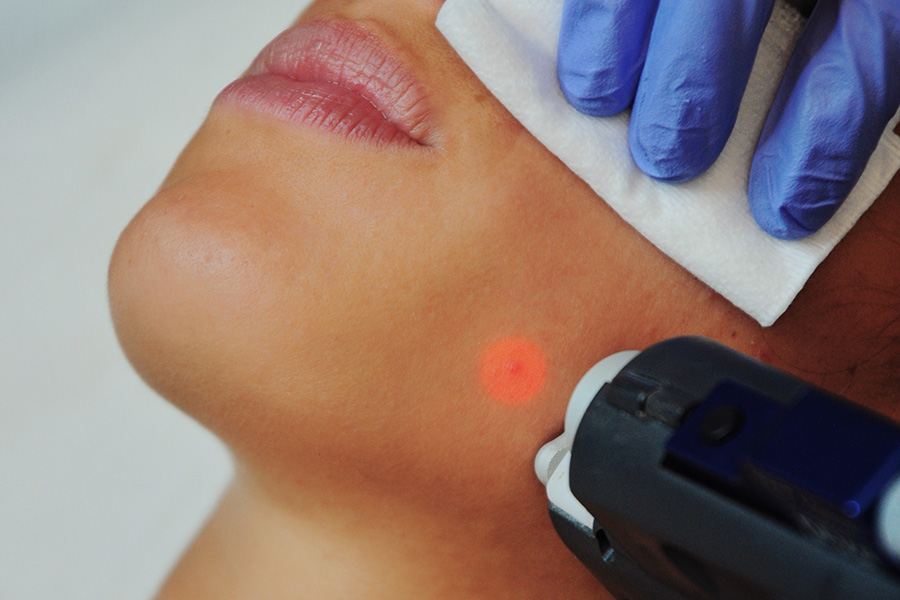Melasma presents as brown patches or flat spots with irregular borders, darker than the skin tone, affecting the cheeks, temples, both sides of the forehead, upper lip, nose, and sometimes even the chest.
It primarily affects darker phototypes, particularly olive complexions characteristic of Mediterranean countries, as well as those with family history. It is exclusively a cosmetic condition that often causes discomfort and embarrassment.
Why Do Dark Spots Form?
The etiology remains largely unknown, but it is hypothesized that excessive hormonal stimulation increases melanocyte activity, compromising their functionality and inducing overproduction of melanin transfer to keratinocytes in the basal layer or dermal macrophages. This results in the characteristic hyperpigmentation of dark spots.
Due to its hormonal relationship, melasma is frequently associated with prolonged oral contraceptive use, irregular menstrual cycles due to estrogen imbalances, and pregnancy - hence its alternative names chloasma or pregnancy mask.
However, despite the idiopathic nature of this condition, certain factors and behaviors can significantly exacerbate it.
UV exposure, for example, intensifies hyperpigmentation: melasma tends to worsen, and in some cases initially appear, in individuals with frequent sun exposure or those who repeatedly expose themselves with insufficient or no protection.
Other aggravating factors include autoimmune thyroid diseases and the use of certain photosensitizing medications such as hydantoin for epilepsy.
While melasma tends to resolve spontaneously after pregnancy or discontinuation of oral contraceptives, in all other cases, systematic treatment is necessary for elimination, particularly as it tends to recur over time.
Effective Solutions and Treatments
At the forefront of tailored protocol development, Image Regenerative Clinic specialists have developed various combined therapeutic regimens for maximum efficacy.
Treatment options always include customized topical home therapy formulated specifically for the patient, combined with one or more therapeutic modalities.
Depending on the case, sessions range from 1 to 10 and can be performed throughout the year.
(*) by Mathilde Bonetti, with consultation from Dr. Caterina Bristot
